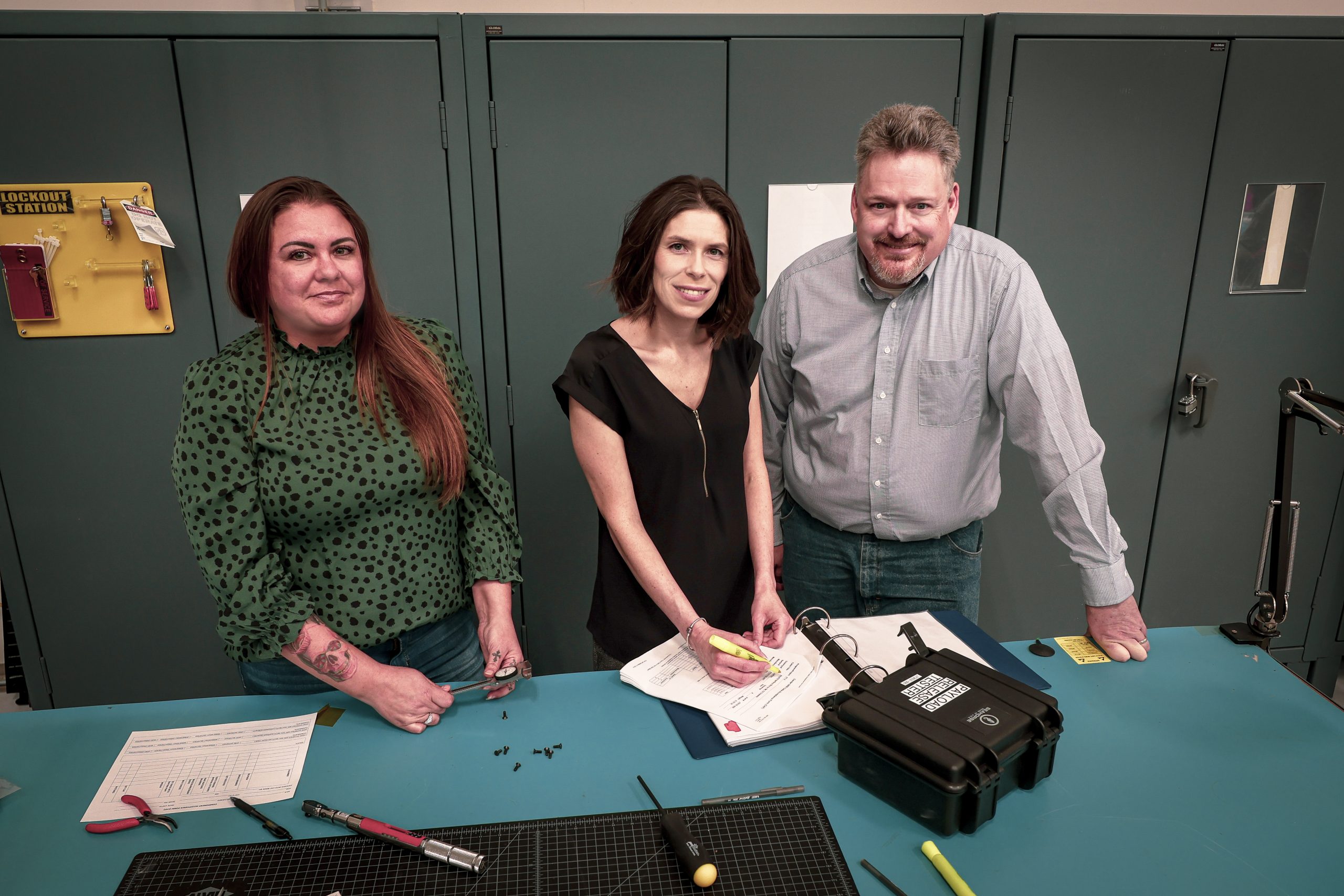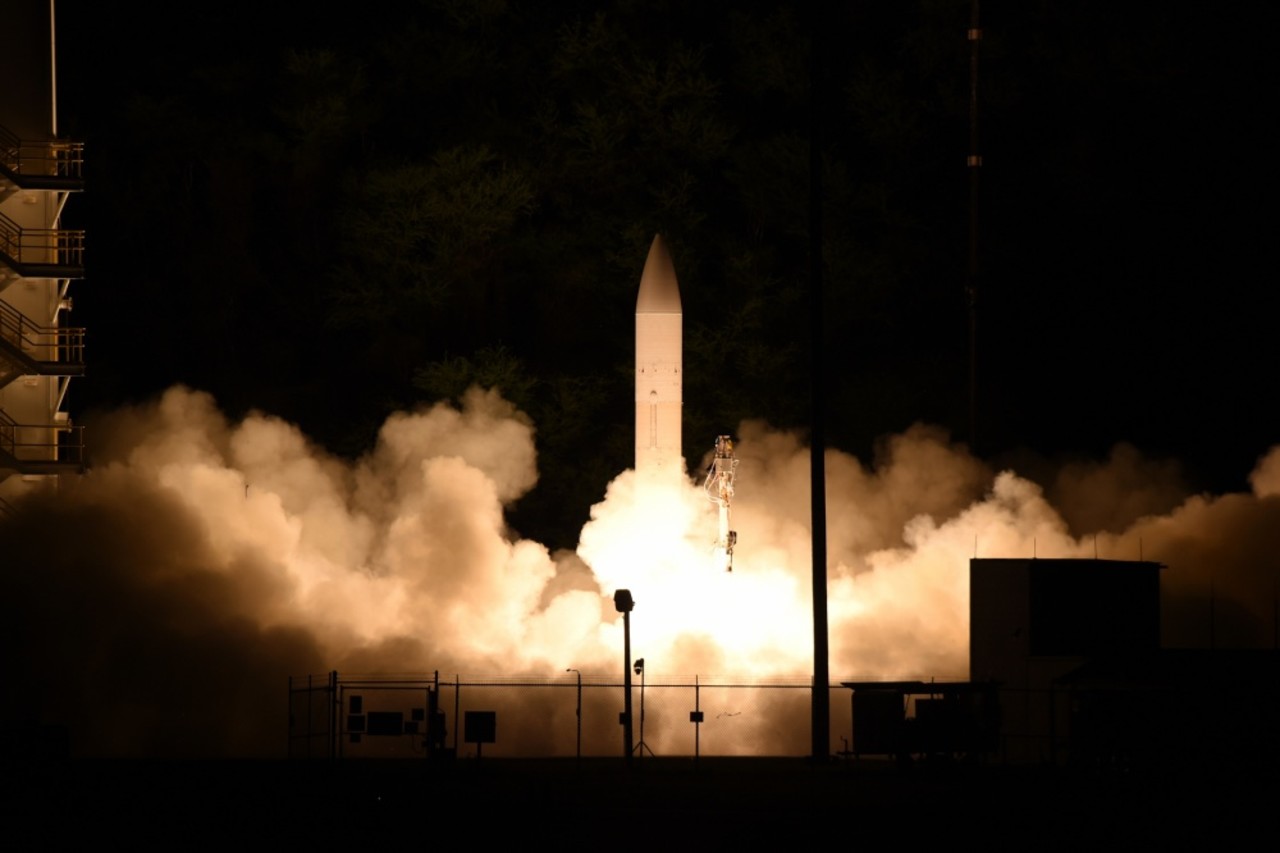ALBUQUERQUE, N.M. — Hypersonic weapons have been a top priority for modernizing the armed forces, with ultrafast, long-range and maneuverable munitions being touted as a revolutionary advance in modern warfare. The U.S. has fast-tracked their development and announced plans to field the first conventional hypersonic missile battery this year. To meet this deadline, some contributing organizations have partnered in unprecedented ways.

Scott Nance, a manager at Sandia National Laboratories, is at the forefront of one such collaboration. He and his team piloted a new way to transfer Sandia’s technical designs to defense contractors for the common hypersonic glide body, which detaches from a rocket and soars at speeds above Mach 5.
The program is now earning recognition and could change how Sandia partners with industry in the future.
“Sandia National Labs’ successful teaming with the Army, Navy and industry has been crucial to keeping the services on the path to our nation’s first operational hypersonic capability,” said Lt. Gen. Robert Rasch Jr., Director, Army’s Rapid Capabilities and Critical Technologies Office.
This year, the Federal Laboratory Consortium for Technology Transfer awarded Sandia a national Interagency Partnership Award for its successful transition of hypersonic technology to industry partners.
The plan, Nance said, initially alarmed some people when he proposed it.
“We got a lot of wide eyes to: ‘Can we do this?’” Nance said.
New program answers call of a tight timeline
Nance manages a team of experts in transferring technical designs from Sandia to industry. He said that for similar projects, moving plans out of the lab and into manufacturing is a slow and meticulous process of documentation, training and testing, especially for projects where the designs are very complicated and margins for error are slim.
“We were given three years to take our design, redesign it to meet the Department of Defense’s weapon system requirements, make it more producible, get it into production and get it fielded,” Nance said. “It’s a time scale that was very hard to meet.”
The only way to get the job done, Nance thought, was to bring in outsiders, lots of them, which seemed to break every rule of a national security lab.
One does not simply walk into a national security lab
As a research and engineering lab born with the atomic bomb, Sandia prioritizes security. Its researchers work on a wide range of sensitive national security projects, including nuclear weapons modernization, critical infrastructure protection and homeland security. Sandia is primarily located on Kirtland Air Force Base. Information is carefully protected, and access is controlled.

Sandia commonly grants access to subcontractors who pass a vetting process to assist with these projects, but Nance proposed something new. He wanted to bring in dozens of the Army’s contractors, who had no agreement with Sandia, and provide them with access to Sandia equipment and resources so they could build the advanced flight systems side by side with Sandia subject matter experts.
Nance said he is unaware of any program that has brought in so many uncontracted visitors to work at Sandia. Though the idea surprised many of his colleagues, Nance and his team developed a plan that satisfied management and security specialists at the labs.
Companies and individuals would need to sign safety and security agreements. Guests would complete the same training as regular employees, from counterintelligence awareness to safety and ethics. Department of Defense security clearances would be verified.
Sandia’s Heather Sandoval, an information management professional on Nance’s team who helped hatch the plan, hosted on-site onboarding for classification briefings and facility tours after partners completed online training.
In 2019, the first class of 14 industry partners reported to Sandia for training. Within six months, the total number grew to 138.
“The second wave was more manageable with the new onboarding process, even though the class size increased dramatically,” Sandoval said.
A new path forward for partnering with industry
At its height, Sandia had trained a total of around 200 partners and was hosting workers from seven companies, including Dynetics, the Army’s lead manufacturing contractor for the common hypersonic glide body. As many as 50 partners were on site at a given time.
Alex Roesler, a Sandia senior manager involved in hypersonic weapon development, said, “Sandia’s facilities team was instrumental in helping us quickly get space configured — lab and office space — to support the work and provide places for these partners to work.”
The payoff was visible as visitors and staff formed a powerful camaraderie.
“What was most memorable to me was seeing all these companies coming together in one space sharing their expertise,” Sandoval said. She was amazed at the mix of managers, technologists, administrators, engineers and others from different companies who filled their daily 8 a.m. team meetings.
“They built Sandia flight hardware side by side with us, learning our culture, learning our language, learning our design and our drawings, and then they were able to take the information back to their companies,” Nance said.
By the end of 2022, Sandia’s industry partners had produced its first flight system. Collaboration at Sandia is ongoing, but components for hypersonic glide bodies are now being produced at facilities around the country.
“We have the knowledge and the expertise. Now it’s our turn to pass the baton to another company for production,” Sandoval said.
The success of the program could change how Sandia approaches technology transfer projects in the future. Sandoval said she has been contacted by other programs that want to learn how her team used industry partners, and Nance said he and his management are evaluating how to adapt the pilot to other programs.
“I absolutely think this is the model for future programs,” Nance said.